The Essence of Kirsch: A Culinary Exploration of Cherry Brandy
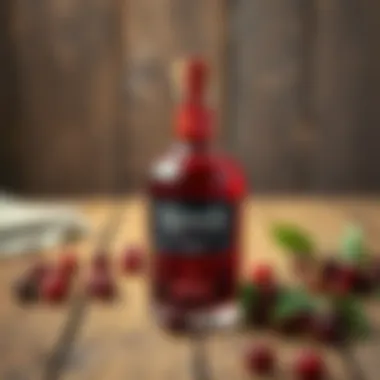
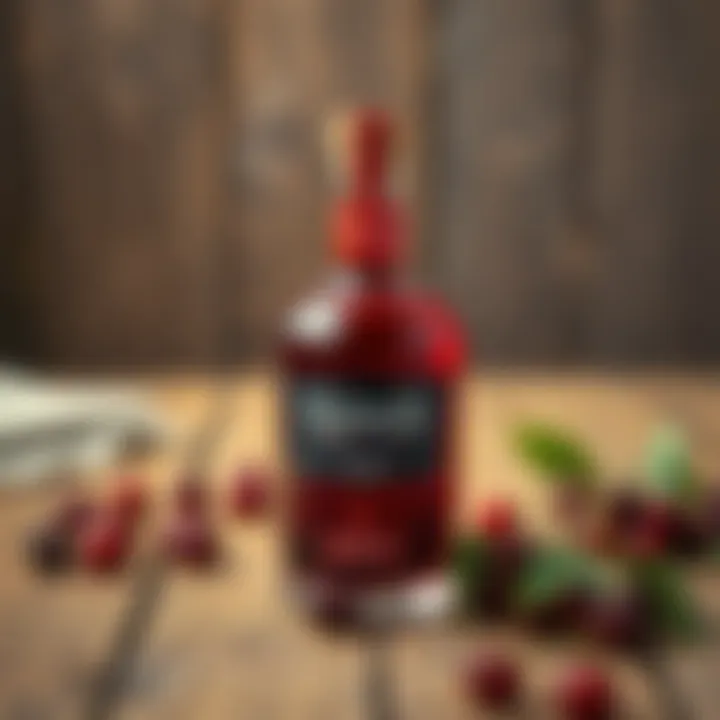
Intro
Kirsch, the cherry brandy that hails from the slopes of the Black Forest, is not just a spirit; it's a slice of cultural heritage. Its robust flavor and intoxicating aroma have made it a beloved ingredient in kitchens worldwide, but its true essence runs far deeper than mere culinary application. This exploration into kirsch looks at how it all began, the meticulous process of distillation, and how this vibrant elixir has secured a seat at the global gastronomic table.
As we peel away the layers of this potent cherry liqueur, we invite you to taste the history woven into every drop. From traditional recipes that celebrate its boldness to contemporary pairings that elevate modern cuisine, kirsch serves as a bridge between the past and present. Grab a seat as we delve into the nuances that make kirsch an indispensable asset to any food lover.
Let's quench our curiosity for this delightful spirit and its myriad uses. By understanding the nuts and bolts behind it, we can fully appreciate how kirsch transforms simple dishes into extraordinary experiences.
Prelims to Kirsch
Kirsch, often known as cherry brandy, has a significant role in the culinary landscape, especially within European traditions. This particular spirit boasts a deep connection to gastronomic culture, intertwining its rich flavors with diverse culinary practices. Its use extends beyond simple enjoyment; it serves as a foundation for countless classic and modern recipes, seamlessly merging flavor with heritage.
The process of producing kirsch is quite fascinating. Made from fresh cherries, its quality is deeply influenced by the specific variety used. Each cherry embodies unique characteristics influenced by its terroir – the soil and climate where it grows. Understanding these factors not only adds depth to our appreciation of kirsch but also guides how it should be paired and utilized in recipes.
Moreover, kirsch is not merely a beverage but a versatile ingredient in both sweet and savory dishes. Its use in traditional recipes like Black Forest Cake or Cherries Jubilee highlights its importance, while contemporary chefs adopt it in innovative ways, experimenting with its dynamic flavor profile. This versatility signifies why kirsch deserves a spotlight in culinary discussions.
When considering the place of kirsch in modern cuisine, we must also factor in the growing interest in craft spirits. Chefs and enthusiasts alike are rediscovering the nuanced profiles offered by artisanal producers, which often yield a more expressive and vibrant spirit compared to mass-produced counterparts. This revival emphasizes an ongoing journey of taste exploration, prompting gastronomes to dive deeper into the essence of kirsch.
Ultimately, the purpose of this article is to unravel all aspects of kirsch – from its historical roots to its current applications. An exploration of kirsch prompts us to reflect on how a single ingredient can inspire both tradition and innovation in the ever-evolving culinary realm.
Historical Context
Kirsch, a unique cherry brandy, has a rich history that is deeply intertwined with both European culture and the culinary arts. Understanding the historical context of kirsch provides insight into its cherished place in gastronomy. The way it has evolved through time reflects not only changes in taste but also shifts in societal values surrounding food and drink.
Origins in Europe
The origins of kirsch date back to the late 16th century in the Black Forest region of Germany. Early records suggest that the locals began distilling cherries to craft a potent spirit, which they called "Kirschwasser". This term directly translates to "cherry water", but it's far from the delicacy one might imagine today. Kirsch was originally produced as a byproduct of the food preservation methods used in rural communities, where no part of the cherry was wasted. The people would use the flesh for jams and desserts, while the pits and leftover fruit found their fate in distillation.
As time went on, this humble cherry brandy gained traction beyond local borders. The unique combination of the local soil, climate, and cherry varieties contributed to its distinct flavor, making it appealing across Europe. When the spirit crossed into France, it was quickly embraced and turned into a centerpiece in traditional preparations, especially in desserts like the famous Black Forest cake. Thus, the humble origins of kirsch began to intertwine with regional culinary practices, showcasing how a single product can become a cultural symbol over time.
Evolution Over Centuries
Kirsch's evolution throughout the centuries cannot be understated. Initially seen as a rustic drink, it has become highly regarded due to its quality and versatility. The 19th century marked a significant turning point, as advancements in distillation techniques allowed producers to refine and enhance the spirit's flavor profile. No longer just a local specialty, kirsch began to find its way into high-end wine cellars and sophisticated cocktail bars.
Over the years, kirsch has also adapted to meet changing consumer preferences. In the 20th century, as the world became more enamored with cocktails, mixologists began introducing kirsch into innovative drink recipes. Its rich, fruity notes paired excellently with various mixers, making it a celebrated ingredient in many classic cocktails. Today, contemporary chefs are excited about exploring kirsch in modern culinary applications, often using it to elevate both sweet and savory dishes.
This ongoing evolution reflects a broader trend in the culinary world—ingredients are not just confined to their historical usages but are frequently reimagined in modern contexts. The resilience and adaptability of kirsch stand as a testament to its integral role in the culinary landscape of Europe and beyond. As chefs and drinks experts continue to push the envelope, kirsch maintains its status as a beloved staple, cherished for both its historical significance and its contemporary dynamism.
"The evolution of kirsch mirrors our culinary journey—where tradition meets innovation."
In summary, the historical context of kirsch paints a vivid picture of its journey from a simple, rustic beverage to a sophisticated and versatile element in the culinary arts. This history enriches our understanding and appreciation of kirsch not just as a drink, but as a vital piece of heritage that connects us to the past.
Production of Kirsch
The production of kirsch is not just a technical process; it embodies tradition, geography, and the true essence of the fruit from which it derives its character. Kirsch, essentially a cherry brandy hailing from the Alsace region of France and parts of Switzerland, showcases how careful attention to cultivating specific cherry varietals plays a crucial role in the final product's flavor and aroma. Understanding its production provides insights into the broad spectrum of tastes and styles, thereby enriching one’s experience in enjoying this remarkable spirit. This section delves into the cherry varieties utilized, the distillation process, and the aging and bottling stages, highlighting the intricate relationship between the cherry and the resulting kirsch.
Cherry Varieties Utilized
Kirsch is predominantly crafted from morello cherries, celebrated for their deep color and complex flavor profile. These cherries, with their tartness and dense flesh, lend kirsch a wonderful balance of sweetness and acidity. However, not all cherries make the cut. For instance, cherry varietals like Lambert or Bing might be sweet, but they lack the tart kick essential for authentic kirsch. Other considerations for selection include the geographical origin of the cherries, as terroir significantly influences the flavor.
Producers often seek cherries that are:
- Optimal ripeness: Cherries need to be picked at just the right moment to capture the ideal blend of sugars and acids.
- Unique characteristics: Some distilleries may include local breeds unique to their area, enhancing the kirsch's region-specific profile.
- Quality control: Purchasing cherries from trusted local farmers assures high quality and consistency in flavor.
With such an emphasis on specific varietals, the cherry plays a pivotal role in defining the identity of kirsch, and producers often take great pride in sourcing the finest available.
Distillation Process
The distillation of kirsch is where magic happens. After the cherries are crushed, the resulting mash undergoes fermentation, which is a vital process for developing the fruit's natural flavors. Fermentation typically lasts around two to three weeks, resulting in a low-alcohol liquid that still carries the rich essence of the cherries. Following fermentation, the mash is distilled to create the brandy which will later become kirsch.
The distillation process often involves:
- Copper Pot Stills: Traditional distilleries often use these, as they allow for better heat control and result in a purer product.
- Double Distillation: This technique ensures that unwanted compounds are removed, yielding a higher quality spirit with depth and clarity.
- Direct Fire Heating: Some artisans use this method, believing it enhances the flavors being extracted from the cherries.
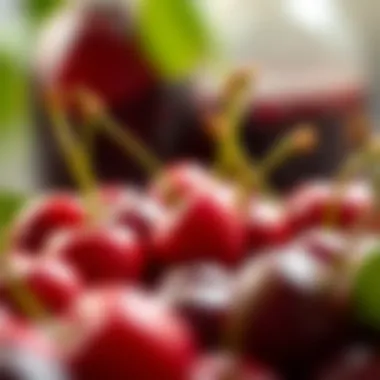
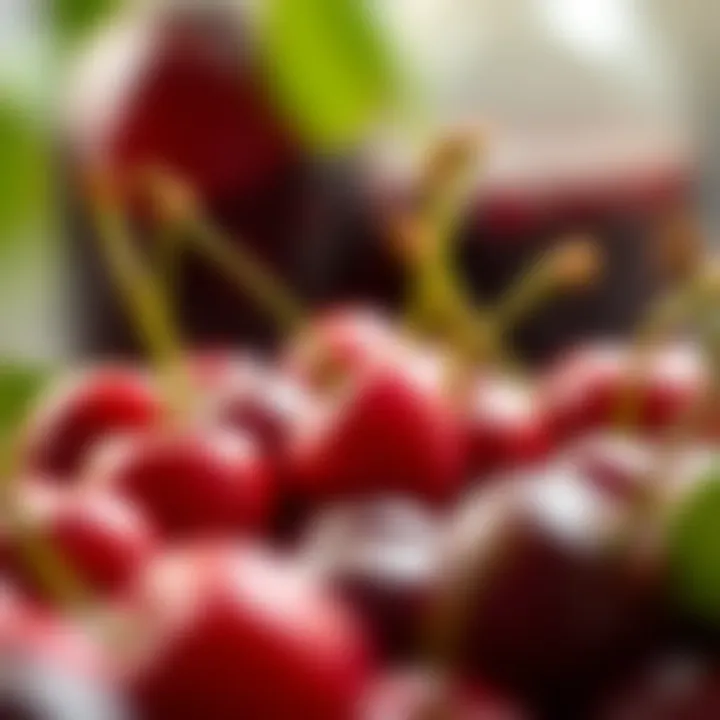
During distillation, the first part of the distillate, known as the 'head,' is typically discarded, as it contains volatile compounds not desirable in the final product. The 'heart' is what makes kirsch special, with its delicate and concentrated cherry flavor.
Aging and Bottling
The aging of kirsch, while not as commonly recognized as with many other spirits, significantly contributes to its character. After distillation, many producers opt for a period of maturation, allowing flavors to meld and evolve. Aging typically takes place in neutral oak barrels, which impart subtle flavors without overshadowing the cherry itself.
This process involves:
- Time Consideration: Aged for a minimum of several months to a few years, this is a delicate balance; too long may mask the cherry essence.
- Bottling Choices: After maturation, kirsch must be carefully filtered and bottled. Some distilleries opt for unfiltered products, emphasizing a raw, natural aesthetic.
- Labeling Practices: The quality of the kirsch is indicated by its labeling, often denoting age, varietals used, and the craftsmanship behind it.
Ultimately, the bottling stage encapsulates the finesse and passion of the producer, presenting a product that speaks not just of craftsmanship, but also of history, culture, and the beautiful cherry trees abundant in those sunlit orchards.
"To fully appreciate kirsch, one must understand the delicate dance between tradition and technique, fruit and craft."
As they say, not all spirits are created equal. Kirsch, with its distinct process, showcases a commitment to preserving the integrity of its ingredients while embracing innovation over time.
Flavor Profile of Kirsch
Understanding the flavor profile of kirsch is crucial for anyone interested in unleashing the full potential of this cherry brandy. Kirsch is more than just a spirit; it embodies a complex taste experience that adds depth to culinary creations. The distinct notes found in kirsch are essential for appreciating its versatility in both cooking and mixology. From the bright cherry flavors to the nuanced characteristics brought forth during the distillation process, every aspect plays a significant role in defining what kirsch is all about.
Tasting Notes
When tasting kirsch, one might first encounter a vivid cherry aroma that entices the senses. The nose is often greeted with notes that can range from fresh, tart cherries to more mature, jam-like qualities, depending on the specific variety of cherries used and the production methods employed. As one takes a sip, the flavor journey continues. The initial impact is typically that of a sweet cherry explosion, but this quickly gives way to a more complex profile that can include hints of almond, hints of floral tones, and a subtle, warming finish. There's also a pleasant bite, courtesy of the alcohol content, which can hover around 40%, that invigorates the palate.
A delightful characteristic of kirsch is its ability to evoke the terroir of the region from which it originates. Depending on whether the ingredients harken from the lush landscapes near the Black Forest or the brighter terrains of Switzerland, the unique environmental factors can influence the final taste. These tasting notes are not merely enjoyed on their own but rather serve as a foundational element in both traditional and modern dishes where kirsch is employed.
Influence of Terroir
Terroir refers to the geographic conditions that affect the agricultural produce of any region, and it holds a special place in the conversation about kirsch. The soil composition, climate, and farming practices in the areas where the cherries are cultivated make all the difference. For instance, cherries grown in the valleys around the Black Forest benefit from the rich, fertile soil combined with a cool climate. This results in a cherry that’s plump, juicy, and primed for distillation.
Additionally, the altitude where the cherries are harvested contributes significantly to their taste. Higher elevations may yield cherries that are smaller but have more concentrated flavors due to slower growth rates. This interplay of elements creates what some would consider the heart and soul of kirsch—an authentic reflection of its homeland.
As one indulges in kirsch, the essence of its terroir becomes palpable, bridging the gap between the drink and the landscape from which it hails. This intrinsic connection not only elevates the spirit itself but enriches the culinary experiences that incorporate kirsch. Whether it's a classic Black Forest Cake or an innovative cocktail, recognizing the influence of terroir invites a deeper appreciation of kirsch's unique flavor profile.
Culinary Applications
The culinary applications of kirsch present an opportunity to savor its versatility and depth in various dishes and drinks. Understanding these applications allows chefs and food lovers to appreciate kirsch not just as a spirit to sip on but as an ingredient that elevates flavors and enhances gastronomic experiences. From traditional recipes that echo history to modern twists that incorporate contemporary flavors, the way kirsch is utilized in the kitchen is remarkable. This section delves into the traditional and modern uses of kirsch, highlighting how it can transform dishes into something truly exquisite.
Traditional Recipes
Black Forest Cake
Black Forest Cake, or Schwarzwälder Kirschtorte as it's known in Germany, is a stunning dessert that brings the essence of kirsch to the forefront. This cake is characterized by its layers of rich chocolate sponge, cherries, and whipped cream, harmonized beautifully with a splash of kirsch. The key characteristic of this cake lies in its balance—each ingredient plays a significant role, yet the kirsch elevates it to sublime heights.
The distinct flavor of kirsch imparts a sharp yet sweet cherry essence that complements the chocolate magnificently. It's not just a beloved choice for celebrations, but also a way to connect with traditions and heritage, making it a vital part of this exploration. The unique feature of Black Forest Cake is its ability to infuse nostalgia into each bite, while also inviting playful creativity in its presentation. However, one disadvantage could be that the alcohol content may not suit everyone's palate, particularly those sensitive to spirits.
Cherries Jubilee
Cherries Jubilee is another prominent recipe where kirsch shines brightly. Often served flambé, this dish features fresh cherries cooked in a rich sauce made with sugar, butter, and of course, kirsch. The key characteristic of Cherries Jubilee is the dramatic presentation, which adds an element of surprise to dining experiences. The fiery show is not just for theatrics; it intensifies the flavors and imbues the dish with a warm, cherry-laden aromas that enthrall diners.
The unique feature of this dessert is its simplicity—using just a handful of quality ingredients, it offers a luxurious outcome. Moreover, the benefits of using kirsch here include a depth of flavor and a complexity that cuts through the sweetness of the cherries. A potential disadvantage might be that flambéing requires caution and practice. Nevertheless, the end result can be worth every bit of effort.
Modern Interpretations
Modern culinary interpretations of kirsch show its evolution in the contemporary kitchen while maintaining respect for its roots.
Kirsch in Cocktails
In the realm of mixology, kirsch has gained ground as a sought-after ingredient in the craft cocktail movement. Bartenders utilize it in a variety of drinks, embracing its distinct cherry flavor while providing a potent kick. The key characteristic here is the versatility—whether enriching a fruity sour or mingling in a sophisticated spritz, kirsch plays well with many spirits and mixers. A benefit of using kirsch in cocktails is its ability to cut through richness or sweetness, providing a well-rounded balance in beverages. Additionally, the unique feature of cocktails incorporating kirsch often lies in their vibrant color and aromatic quality, making them as attractive as they are tasty. On the flip side, its strong flavor means it must be used judiciously; too much can overshadow other ingredients.
Culinary Pairings
Lastly, exploring culinary pairings with kirsch showcases its adaptability beyond the realm of desserts and drinks. Chefs are now incorporating kirsch into savory dishes, finding that it adds depth and brightness. The key characteristic of culinary pairings involving kirsch is its ability to complement the umami flavors in meats, cheeses, and even certain veggies. Using kirsch in sauces or glazes can elevate dishes, adding complexity that resonates with diners. A benefit to culinary pairings is their potential to surprise and delight those trying them for the first time. Moreover, the unique feature of these pairings is they often lead to unexpected flavor marriages that enhance both the kirsch and the dish. Conversely, caution must be taken, as not all ingredients harmonize well; finding the right balance is crucial.
Kirsch isn't just a cherry brandy; it embodies a culinary journey, bridging traditional charm with modern finesse.
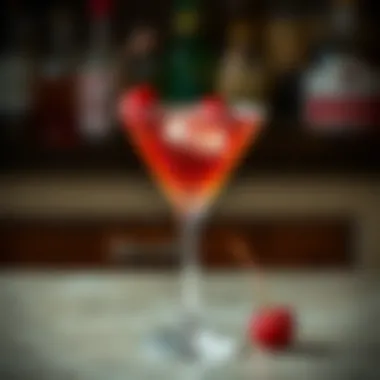
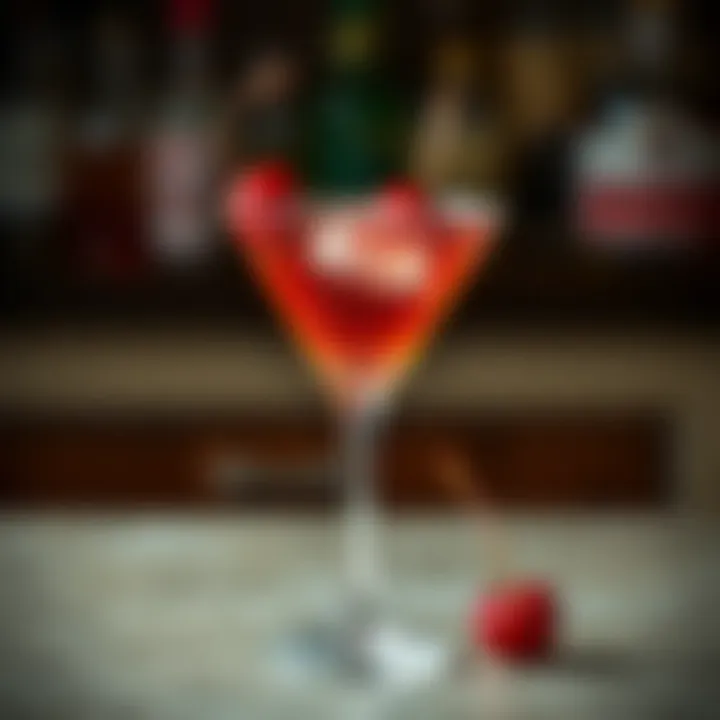
As we see, kirsch serves a vital role across a wide spectrum of culinary applications, revealing its complexities and versatility. With each recipe and pairing, it's a reminder that the cherry brandy is not merely a drink, but a gateway to a multifaceted culinary adventure.
Pairing Kirsch with Food
Pairing kirsch with food is not just about enhancing flavors; it’s an exploration of textures, aromas, and the stories behind every bite and sip. Kirsch, with its assertive taste and fruity undertones, serves as a wonderful conduit for culinary creativity. This section aims to highlight the benefits and considerations when pairing this vibrant cherry brandy with food, providing insights that make each pairing an adventure in gastronomy.
When you think about kirsch, it's easy to see it as merely a component in cocktails or dessert recipes. However, its true potential emerges when it becomes the star of the meal, breathing life into a wide array of dishes. Its importance lies in how it can elevate flavors, complementing sweetness with its slight bitterness, or even cutting through richness with its crisp acidity. Not only does it enrich your culinary experience, but it also bridges cultures and traditions, showcasing the versatile nature of this spirit.
In essence, pairing kirsch with food invites a dialogue between different elements of the meal, allowing you to discover new dimensions of flavor. Considerations such as the preparation method, seasoning, and the overall flavor profile help shape the perfect pairing. What’s more, each combination tells a story, and this narrative lies at the heart of kirsch's appeal.
Dessert Combinations
Desserts have a special place in the heart of kirsch lovers. Its sweet and tangy profile makes it an ideal companion for numerous confections. Traditional desserts like Black Forest Cake showcase a classic use of kirsch, infusing layers of chocolate, cherries, and cream with that delightful spirit. The kirsch doesn't only highlight the cherry flavor but also adds depth to the chocolate, creating a balance that many find irresistible.
Let’s not overlook the possibility of experimentation. Here are a few more dessert combinations you might consider when pairing kirsch:
- Cherry Sorbet: The natural cherry flavors in the sorbet are amplified by a splash of kirsch.
- Tart Cherry Pie: A drizzle of kirsch over a warm pie brings out the tartness of the cherries.
- Chocolate Fondue: Mixing a bit of kirsch into your chocolate fondue can give that rich treat a surprising twist.
Cheese and Savory Matches
While kirsch shines in desserts, its applications don’t stop there. Pairing it with cheese or savory dishes can yield delightful results. The key to leveraging kirsch's flavor lies in the rich and creamy characteristics of cheeses, which balance beautifully with its sharpness. For example, you might try a wedge of aged Gruyère, where the nutty and buttery notes meld majestically with a small glass of kirsch, creating a delightful contrast.
Exploring savory matches can also include:
- Charcuterie Boards: Aged meats can gain a new lease of life alongside kirsch, enhancing their savory profiles.
- Foie Gras: The richness of foie gras is tuned perfectly by the refreshing tartness of kirsch, making a luxurious pairing.
- Roasted Nuts: Spiced nuts tossed with a hint of kirsch can provide an enticing snack that pairs well with cocktails.
In sum, pairing kirsch with food is not just a culinary exercise but a journey in taste that invites creativity. Letting kirsch take center stage in various dishes enriches not just the meal, but your overall appreciation for this versatile brandy. Now, is the perfect time to experiment and discover how kirsch can transform your culinary repertoire.
Kirsch in Mixology
Mixology is not just about mixing drinks; it's an art where flavors dance and blend to create memorable experiences. When it comes to kirsch, this cherry brandy brings a unique profile that transcends traditional borders, adding an extra flair to cocktails. For enthusiasts, understanding the role of kirsch in mixology is essential, as it opens the door to creative concoctions and timeless classics. In this realm, kirsch is celebrated not only for its taste but also for the cultural stories it carries within each serving.
Classic Cocktails
Classic cocktails featuring kirsch exemplify the beauty of simplicity elevated by quality ingredients. The French 75 and Kirsch Sour are prime examples where kirsch stands tall among its peers. The
- French 75 brings a splash of zesty lemon and effervescence from sparkling wine, creating a refreshing drink perfect for any occasion. Here’s how you can mix it:
- 1 oz of gin
- 1/2 oz kirsch
- Juice of half a lemon
- Top with sparkling wine
Just shake the gin, kirsch, and lemon juice, strain into a glass, and add the sparkling wine. Light and fizzy, this cocktail charms with every sip.
- Kirsch Sour delights the palate with its fruity tang. With just three ingredients:
- 2 oz kirsch
- 1 oz fresh lemon juice
- 3/4 oz simple syrup
Simply shake with ice and strain into a chilled glass. This concoction provides a delightful balance of sweetness and acidity that keeps you coming back for more.
Using kirsch in these classic cocktails not only enhances their flavor but reflects an appreciation for tradition, marrying yesterday’s recipes with today’s taste.
Innovative Drink Recipes
In the rapidly evolving world of cocktails, innovation plays a critical role. Kirsch lends itself beautifully to contemporary drink recipes, breathing life into new mixes. For those who like to push the envelope, here are some trailblazing recipes to consider:
- Cherry Blossom Martini: This visually stunning drink combines kirsch with vodka and a hint of elderflower liqueur, garnished with a cherry blossom.Shake well and pour into a martini glass. The result is both delicate and vibrant, perfect for impressing your guests at a cocktail party.
- Kirsch Spritzer: A fresh take utilizing kirsch and club soda, this drink is perfect for warm days.
- Recipe includes:
- 2 oz vodka
- 1 oz kirsch
- 1/2 oz elderflower liqueur
- Combine:
- 1 oz kirsch
- 3 oz club soda
- Lemon wedges
Serve over ice with lemon. It’s a light and refreshing sip that allows the cherry flavor of the kirsch to shine without overpowering.
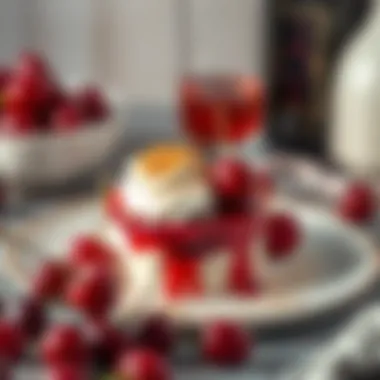
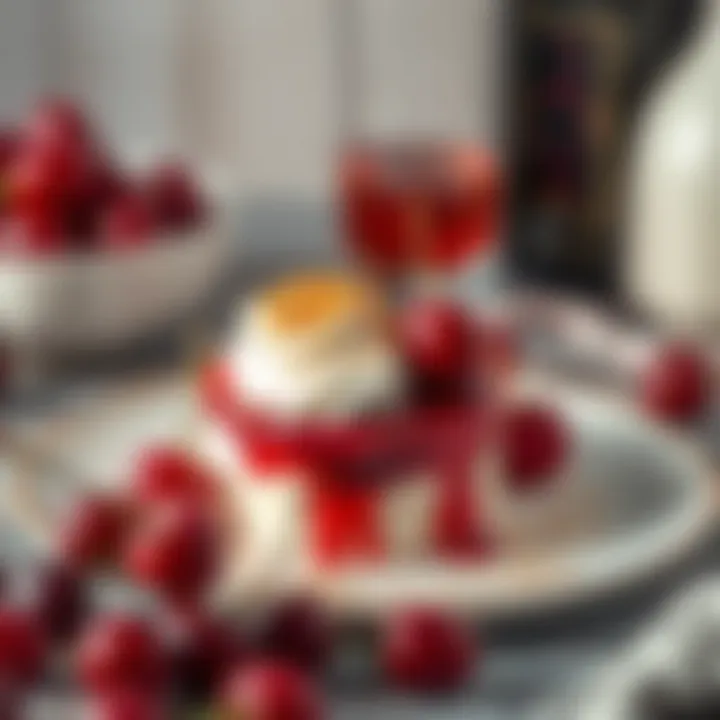
In the world of mixology, using kirsch not only enhances flavors but also pays homage to the wonderful cherry trees that have inspired such creativity in the glass.
"Every sip of a well-crafted cocktail tells a story, and with kirsch, it’s a tale of tradition, flavor, and artistry."
For those keen on exploring, websites such as liquor.com, diffordsguide.com, and imdb.com can be invaluable resources for innovative recipes and cocktail ideas.
Embracing kirsch in mixology not only adds depth to the flavors but also sparks curiosity about its rich heritage, making each cocktail an exploration in taste.
Cultural Significance
The cultural significance of kirsch transcends its role as merely a beverage. In various regions, this cherry brandy is imbued with traditions and ceremonies that reflect the rich tapestry of local customs. Kirsch is not just a drink; it embodies a connection to the communities that produce it, often intertwined with their identities and histories. Understanding these cultural nuances adds depth to the appreciation of kirsch, turning it into a symbol of heritage, craftsmanship, and communal celebration.
Regional Variations
Across Europe, kirsch is not monolithic; it comes in distinct variations depending on the area of production. For instance, in Switzerland, one might encounter Kirsch Wasser, which is revered for its pure cherry flavor and typically enjoyed straight. Meanwhile, in Germany, the Schwarz-wälder Kirsch, famously associated with the Black Forest region, serves as a vital ingredient in the iconic Black Forest Cake. Here are some notable variations:
- Swiss Kirsch: Often touted for its clear, fragrant qualities, characterized by a robust taste of cherry.
- German Kirsch: Potentially sweeter, it often undergoes a different distillation process, giving it a unique flavor that holds its own in desserts.
- French Kirsch: Known for its subtlety, it melds seamlessly with dishes rather than dominating them, often used to enhance pastries and cheeses.
The distinct profiles and production methods reflect not just local cherry varieties but also the climatic conditions and cultural preferences that influence them. This sense of place is foundational to any understanding of kirsch, showing how such a simple ingredient can evoke complex identities.
Festivals and Celebrations
Kirsch plays a pivotal role in various regional festivals and celebrations across Europe. In the heart of Winterthur, Switzerland, the annual Kirsch Festival celebrates local distilleries and their craft, drawing enthusiasts who come to taste and appreciate the nuances of this cherished spirit. During the festive season, households often use kirsch in holiday dishes, filling the air with a nostalgic aroma that bonds families over shared culinary traditions.
In Germany, particularly in the Black Forest, community gatherings and fairs feature kirsch-based drinks and desserts. These celebrations often center around local cherry harvests, where people indulge in dishes like the famous Schwarzwälder Kirschtorte. Here, kirsch acts as a celebration of life, joy, and the cyclical nature of agricultural abundance. These festive occasions serve not just to enliven taste buds but to strengthen community ties.
Kirsch's cultural footprint extends into holiday traditions and family gatherings, reinforcing the notion that faithful recipes containing kirsch are often passed down through generations. The shared experience of enjoying kirsch brings warmth and connection to those who partake, showcasing the drink's significance as more than just an addition to a meal.
By diving into the cultural significance of kirsch, we uncover a world where each sip encapsulates centuries of tradition, community, and artistry. Through regional variations and the critical role in celebrations, kirsch stands as a testament to the enduring and evolving nature of culinary heritage.
Health Considerations
Understanding the health considerations related to kirsch is crucial for anyone who appreciates this unique cherry brandy. While kirsch can enhance culinary experiences, it's important to recognize aspects that go beyond mere flavor. The balance between enjoying kirsch and being mindful of one's health creates depth in a truly gastronomical experience. This section explores moderation in consumption and the nutritional profile of kirsch, helping to foster a well-rounded appreciation of this spirit.
Moderation and Effects
When it comes to alcohol, moderation is king. Kirsch boasts a potent kick, boasting high alcohol content. As with any spirit, excessive intake can lead to undesirable effects. These may range from headaches and nausea to more profound long-term concerns like liver damage. Thus, enjoyment should be balanced.
In many cultures, kirsch is considered a digestif. Sipping a small glass after a meal can aid digestion. However, frequent excessive consumption can reverse these benefits, contributing to weight gain or health issues. For those embracing kirsch, keeping portions in check not only safeguards health but also enhances the drinking experience.
People might be surprised to learn that, when enjoyed moderately, kirsch can have some health benefits. It has antioxidants derived from cherries, which may contribute to cardiovascular health. Even as a cherry-based product, it is always wise to consume it in moderation.
Nutritional Content
Perhaps many don’t think about it, but analyzing the nutritional value of kirsch can reveal insightful information regarding its overall contribution to our diet. Typically, a 1.5-ounce serving of kirsch contains around:
- Calories: Approximately 100
- Carbohydrates: 0-1 grams
- Sugars: Minimal to none
Here it is key to note that kirsch has no fat and is low in carbs, which might appeal to certain diets. However, while it contains some beneficial compounds from the cherries, kirsch should not be relied upon for nutritional needs.
Moreover, the flavors derived from the cherries can excite certain receptors in our taste buds, which is an exhilarating experience in itself. While enjoying kirsch, one ought to appreciate the balance of drinking responsibly alongside genuine flavors that play a role in a culinary experience.
"A little kirsch can sweeten a dish or a moment, but let it not become the crux of your health."
Finale
The significance of exploring kirsch transcends mere culinary curiosity. This article has meticulously charted the nuances of kirsch, from its rich European origins to its intricate production and diverse applications in modern cuisine. Understanding kirsch is essential for anyone passionate about gastronomy, not just as a drink but as an ingredient that can elevate countless dishes.
The Future of Kirsch
The future of kirsch appears promising, especially as culinary trends continue to lean towards unique flavor profiles and authentic ingredients. In recent years, there's been a noticeable shift toward craft beverages, where consumers seek quality over quantity. This trend aligns perfectly with the artisanal nature of kirsch production.
"As more people embrace the idea of using traditional spirits in innovative ways, kirsch will likely gain the attention it deserves in the global market."
The rise of craft cocktails is also contributing to a resurgence in interest around kirsch. Bartenders around the world are experimenting with this cherry brandy, often using it to bring depth to cocktails that challenge the palate. Additionally, as awareness grows about the meticulous process behind kirsch's creation, appreciation for its unique qualities is likely to expand.
Moreover, sustainability in production practices is gaining traction. Many kirsch producers are focusing more on organic cherry farming and eco-friendly distillation methods. This shift not only enhances the quality of the product but also responds to consumer demand for environmentally-conscious practices.
With a rich history and a place in traditional cuisines, kirsch is set to find its own niche in contemporary gastronomy. Establishments that embrace both the history and innovation of kirsch, from boutique distillers to upscale restaurants, will significantly shape its trajectory.
As we move forward into this new culinary era, the potential pairing possibilities with both sweet and savory dishes remain vast. The adaptability of kirsch in culinary applications will undoubtedly solidify its status as a sought-after ingredient. Ultimately, kirsch will continue to thrive by balancing its heritage with modernity, making it relevant for future generations of food lovers.















